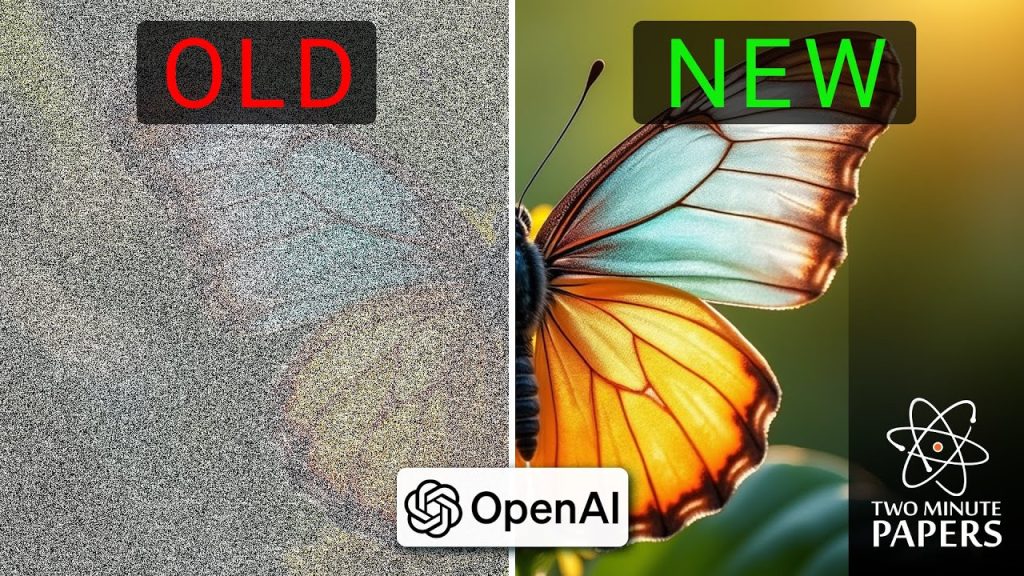Unveiling OpenAI’s Consistency Models A Leap Ahead in AI Technology

OpenAI has taken the AI community by storm with a groundbreaking paper that sidesteps the much-debated diffusion models. Everyone seems to be talking about those, but OpenAI’s new approach takes a fresh turn. It’s called consistency models, offering a new dimension to AI capabilities, especially considering how dynamic this field is becoming.
These models showcase some jaw-dropping features, promising significant advancements in AI-generated images and more. Imagine a world where you can achieve high-quality images with just one or two steps. It feels like science fiction, yet here we are! The technology is racing forward, opening doors to faster, more efficient applications. Let’s dive into what this means for the future of AI.
The Fascinating World of Diffusion Models
Diffusion models have been a hot topic in the AI sphere. They start from noise and gradually convert it into coherent images. These models are adaptable, working for both video and 3D generation. It’s like witnessing magic, as they transform random noise into virtual characters or animations, albeit with a touch of unpredictability.
The catch, however, is time. As exciting as these diffusion models are, they often require numerous steps to generate a usable image. Typically, this involves 20 or more steps, taking quite a while to produce results. In essence, the time factor is a significant hurdle in real-time applications.
Consistency Models: A Game Changer?
OpenAI’s new paper introduces consistency models, a concept veiled in complex mathematics but promising in potential. These models are game-changing because they can churn out impressive images in just one or two steps. That is an incredible reduction from the 20 or more steps needed before.
The rapid speed doesn’t compromise quality much, making them ideal for applications that crave speed and quality. While one-step results may lag slightly, the quality with two steps is rapidly approaching that of previous diffusion models.
Why Speed Matters in AI
Speed is of the essence in AI developments.
i. It’s not just about how quickly an image is generated. Speed directly impacts the feasibility of applications in gaming, real-time simulations, and interactive environments. Faster processing means more interactive and engaging experiences for users.
It’s exciting to think that one day, you could draw something, and it instantly transforms into a video game character. That’s the kind of future consistency models are hinting at, pushing the boundaries of possibilities.
It’s a thrilling era for AI enthusiasts, and these advancements offer an enticing glimpse into the future of interactive digital experiences.
Consistency models could be the key to unlocking real-time AI applications. They leverage the power of AI’s ability to learn and recreate. This could very well spearhead new developments in gaming and animations.
The AI learns by playing games, like ‘Doom,’ and then mimics the creation of the game itself. Envision playing a game and having it evolve in real-time through AI learning. That’s the magic these models promise! It sounds unbelievable, yet it’s a potential reality.
The Pros and Cons of AI Models
Every new technology comes with its pros and cons.
On the positive side, consistency models drastically reduce the time required to achieve high-quality results. This efficiency is a significant win, especially for industries needing fast execution.
However, consistency models still lean on diffusion models for some creation aspects. That suggests they aren’t ready to completely replace existing technologies yet.
Flux and Schnell: Competing Innovations
Let’s not overlook other advancements while we marvel at consistency models. Flux’s text-to-image model ‘Schnell’ is quick too, achieving reasonable images in 2 to 4 steps. While not real-time, these steps are completed in a second or less.
The implications of Schnell are huge for industries that rely on quick turnaround times. It holds its own by offering fast, efficient image generation which can complement consistency models in suitable domains.
The innovation landscape is vast, and each model contributes its bit towards an AI-augmented world, promising faster results in the near future. The diversity of these models enriches the toolkit available for developers and researchers.
Even as we witness the emergence of new models, traditional ones hold value. The intriguing possibilities offer fertile ground for further breakthroughs, heralding a promising future for AI.
Real-Time Applications on the Horizon
The thought of real-time applications is tantalizing. Tools like consistency models suggest a future where AI’s speed aligns with human creativity.
It’s exhilarating to ponder the prospects of creating something on-the-fly without waiting for rendering or processing. Consistency models offer the hope of achieving this once-dreamed possibility, blurring the lines between creation and execution.
Industries like gaming, film, and virtual reality stand to gain tremendously.
The journey to achieving real-time processing is arduous, but the destination promises a revolution in how AI is integrated into everyday life. The dream of seamless interaction with technology edges closer with every new development.
The Path Forward for AI
Consistency models herald an exciting phase in AI innovation. OpenAI’s advancements pave the way for faster, more efficient processes in AI technology.
While it’s still early days, consistency models expand the possibilities of what AI can achieve. The potential is enormous, from enhancing real-time gaming to revolutionizing how animations are generated instantly.
There’s anticipation and excitement about what lies ahead.
OpenAI’s efforts are merely the beginning. As they refine these models, there’s hope for extraordinary breakthroughs in AI, making the realm of real-time achievements an enticing reality.
The First Step in Many
The advent of consistency models is just the beginning. AI enthusiasts eagerly anticipate refining and expanding these models, unleashing further advancements.
Picture a landscape where AI learning happens in a blink, creating immersive experiences instantly. The horizon seems boundless with potential and ambition, with the promise of even more groundbreaking innovations in AI technology on the cards.
Consistency models are part of a broader ecosystem, collaborating with innovative breakthroughs like Schnell to drive evolution in AI methodologies.
As each new model emerges, the collective potential of AI magnifies, promising fresh, innovative ways to enhance the human experience. The fulcrum of AI advancements leans ever more positively towards practical, real-world applications.
OpenAI’s consistency models are rewriting the rules of what AI can do. These innovations are not just theoretical but could soon change how we interact with AI. It’s an enthralling development that suggests the future of AI is bright and full of possibilities.
Source: Youtube





